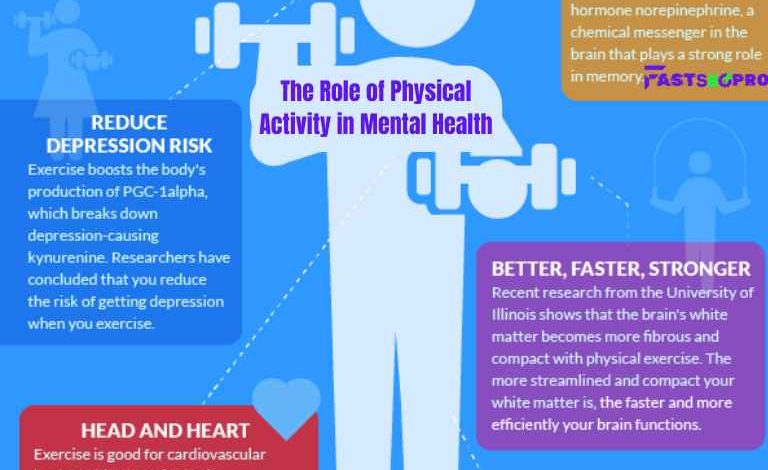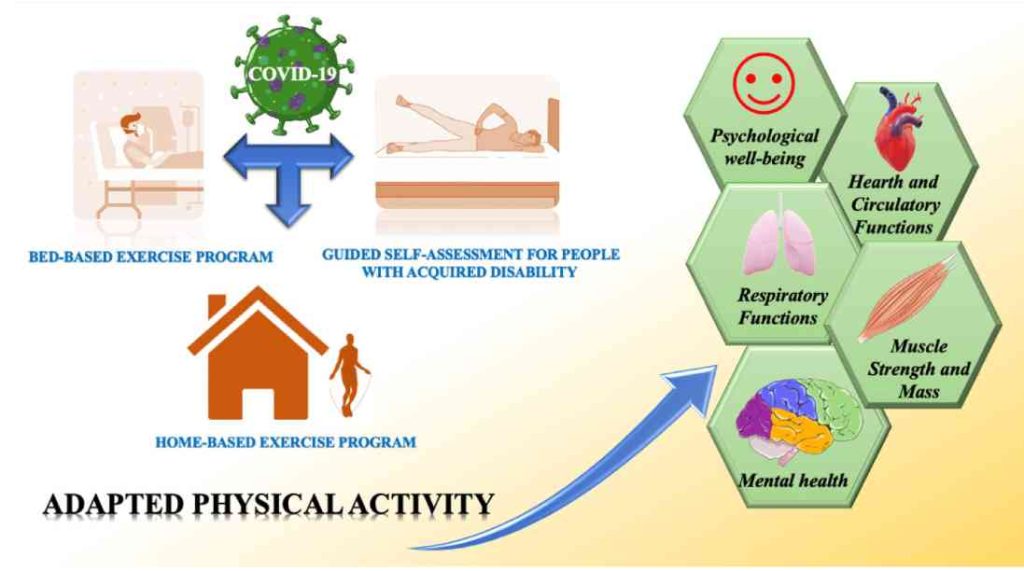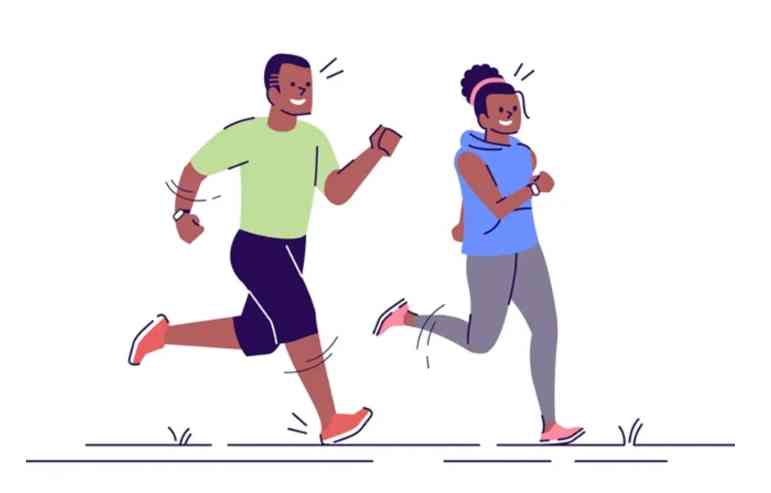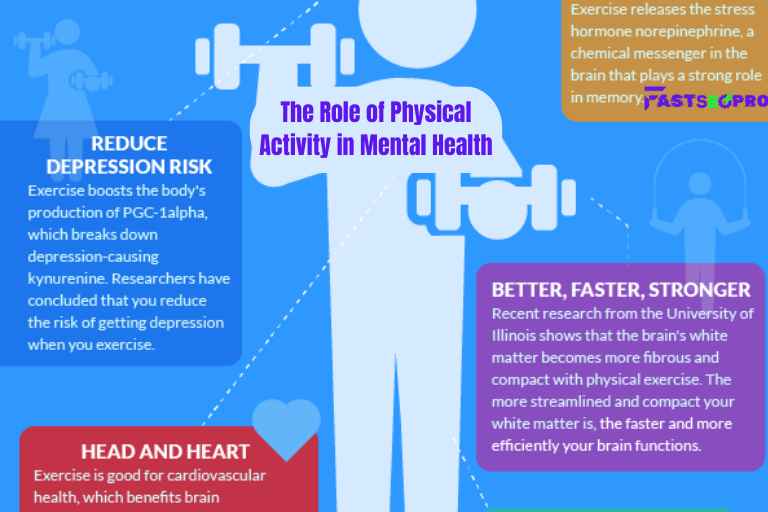The Role of Physical Activity in Mental Health

Introduction
Physical Activity in Mental Health Have you at any point saw how a lively stroll in the park can give you a much needed boost? Or on the other hand how a decent exercise meeting leaves you feeling invigorated and lucid? There’s major areas of strength for a between actual work and psychological wellness, and understanding this connection is critical for further developing our general prosperity.Free Make Money Online. unlimited free business temp email
Understanding Mental Health
Mental Health includes our close to home, mental, and social prosperity. It influences our thought process, feel, and act, and assumes a huge part by they way we handle pressure, connect with others, and simply decide. Normal psychological wellness issues incorporate tension, misery, and stress-related messes.
The Science Behind Physical Activity and Mental Health
Physical activity influences mental health through various mechanisms:
- Biological Mechanisms: Exercise builds the creation of endorphins, frequently alluded to as “inspirational” chemicals, and different synapses like serotonin and dopamine, which assist with managing temperament and tension levels.
- Psychological Mechanisms: Active work can work on confidence, give a feeling of achievement, and act as an interruption from pessimistic considerations and feelings.
- Social Mechanisms: Taking part in proactive tasks, particularly bunch exercises, can improve social association and backing, which are basic for mental prosperity.
Benefits of Physical Activity on Mental Health
- Lessening Nervousness: Customary active work can fundamentally decrease uneasiness side effects by advancing unwinding and stress alleviation.
- Fighting Discouragement: Exercise is known to be a compelling energizer. It lightens side effects by further developing rest, supporting state of mind, and upgrading cerebrum capability.
- Upgrading State of mind: Actual work invigorates the development of endorphins and other temperament improving synthetic substances, prompting worked on in general mind-set.
- Helping Confidence: Accomplishing wellness objectives and upgrades in actual appearance can prompt improved confidence and self-perception.
- Working on Mental Capability: Exercise improves cerebrum capability, prompting better memory, fixation, and smartness.
Types of Physical Activities Beneficial for Mental Health
- Aerobic Exercises: Exercises like running, cycling, and swimming increment pulse and work on cardiovascular wellbeing, which thusly helps emotional well-being.
- Strength Training: Weightlifting and opposition activities can help confidence and by and large body strength.
- Yoga and Mindfulness Exercises: These practices consolidate actual development with mental concentration, advancing unwinding and stress decrease.
- Sports and Group Activities: Participating in group activities or gathering activities can upgrade social communication and encouraging groups of people.
- Outdoor Activities:Climbing, cultivating, and other open air exercises give openness to nature, which has been displayed to decrease pressure and further develop temperament.The amount Exercise Is Required?

How Much Exercise Is Needed?
How much activity required can differ, yet basic principles recommend no less than 150 minutes of moderate high-impact action or 75 minutes of vivacious movement each week, combined with muscle-reinforcing exercises on at least two days of the week. Adjusting power and length is critical to forestalling burnout and guaranteeing long haul adherence.
Practical Tips to Get Started
- Putting forth Sensible Objectives: Begin with feasible focuses to construct certainty and stay away from dissatisfaction.
- Tracking down Charming Exercises: Pick exercises that you appreciate to cause exercise to feel less like a task.
- Making a Daily practice: Lay out a customary timetable to make active work a predictable piece of your life.
- Remaining Propelled: Monitor your advancement, praise achievements, and look for help from companions or exercise gatherings.
Physical Activity in Different Populations
- Kids and Teenagers: Empowering dynamic play and sports cooperation can upgrade physical and mental turn of events.
- Grown-ups: Ordinary activity can assist with overseeing pressure, further develop state of mind, and forestall psychological wellness issues.
- More established Grown-ups: Actual work can keep up with mental capability, further develop versatility, and decrease the gamble of psychological wellness issues.
- People with Handicaps: Versatile proactive tasks can work on actual wellbeing and lift mental prosperity.
Case Studies
Genuine models outline the significant effect of actual work on psychological wellness. For example, a review showed that members who took part in normal high-impact practice experienced critical decreases in misery and nervousness side effects.

Barriers to Physical Activity
Normal hindrances incorporate absence of time, inspiration, or assets. Conquering these obstructions includes defining reasonable objectives, tracking down agreeable exercises, and looking for social help.
Combining Physical Activity with Other Mental Health Treatments
While practice is gainful, it’s not unexpected best when joined with different medicines like treatment and drug. All encompassing methodologies that incorporate active work, good dieting, and psychological well-being backing can prompt the best results.
Workplace Wellness Programs
These projects advance actual work among representatives, prompting decreased pressure, worked on psychological well-being, and expanded efficiency. Fruitful models remember for site wellness offices, wellbeing challenges, and adaptable plans for getting work done.
Community Initiatives
Advancing active work and emotional wellness mindfulness through local area drives can have a wide-arriving at influence. Neighborhood projects and missions can give assets, backing, and potential open doors for individuals to get dynamic and further develop their psychological prosperity.
Future Directions and Research
Arising concentrates on keep on investigating the unpredictable connection between active work and psychological wellness. Future exploration might reveal new bits of knowledge and ways to deal with tackling the advantages of activity for mental prosperity.
| Dive into 2024’s Most Popular Mobile Games | Top 10 Most Popular Social Media Companies in Feb 2024 |
| How to Install phpBB on Your Website Like a Pro | What is AbanteCart? |
Conclusion
Integrating active work into your everyday schedule can have significant advantages for your emotional wellness. From decreasing nervousness and sorrow to upgrading temperament and mental capability, the benefits are clear. Thus, trim up those shoes and begin moving — your psyche will much obliged!

FAQs
How rapidly can practice influence psychological wellness?
Enhancements in temperament and nervousness can frequently be felt after only a solitary meeting of activity, however predictable movement north of half a month yields the best outcomes.
What are the best activities for stress alleviation?
Oxygen consuming activities like running, swimming, and cycling, as well as yoga and jujitsu, are exceptionally successful for stress help.
Might active work at any point swap medicine for psychological well-being issues?
While exercise can fundamentally work on emotional wellness, it shouldn’t supplant prescription without speaking with a medical services supplier. It can, in any case, supplement different medicines successfully.
How truly does practice assist with nervousness?
Practice decreases tension by expanding endorphins, further developing rest, and filling in as an interruption from stress.
How would it be advisable for me to respond on the off chance that I feel more terrible in the wake of working out?
In the event that you feel more awful in the wake of working out, it very well may be because of overexertion or a fundamental medical problem. Consider counseling a medical services proficient and changing your work-out routine as needs be.






